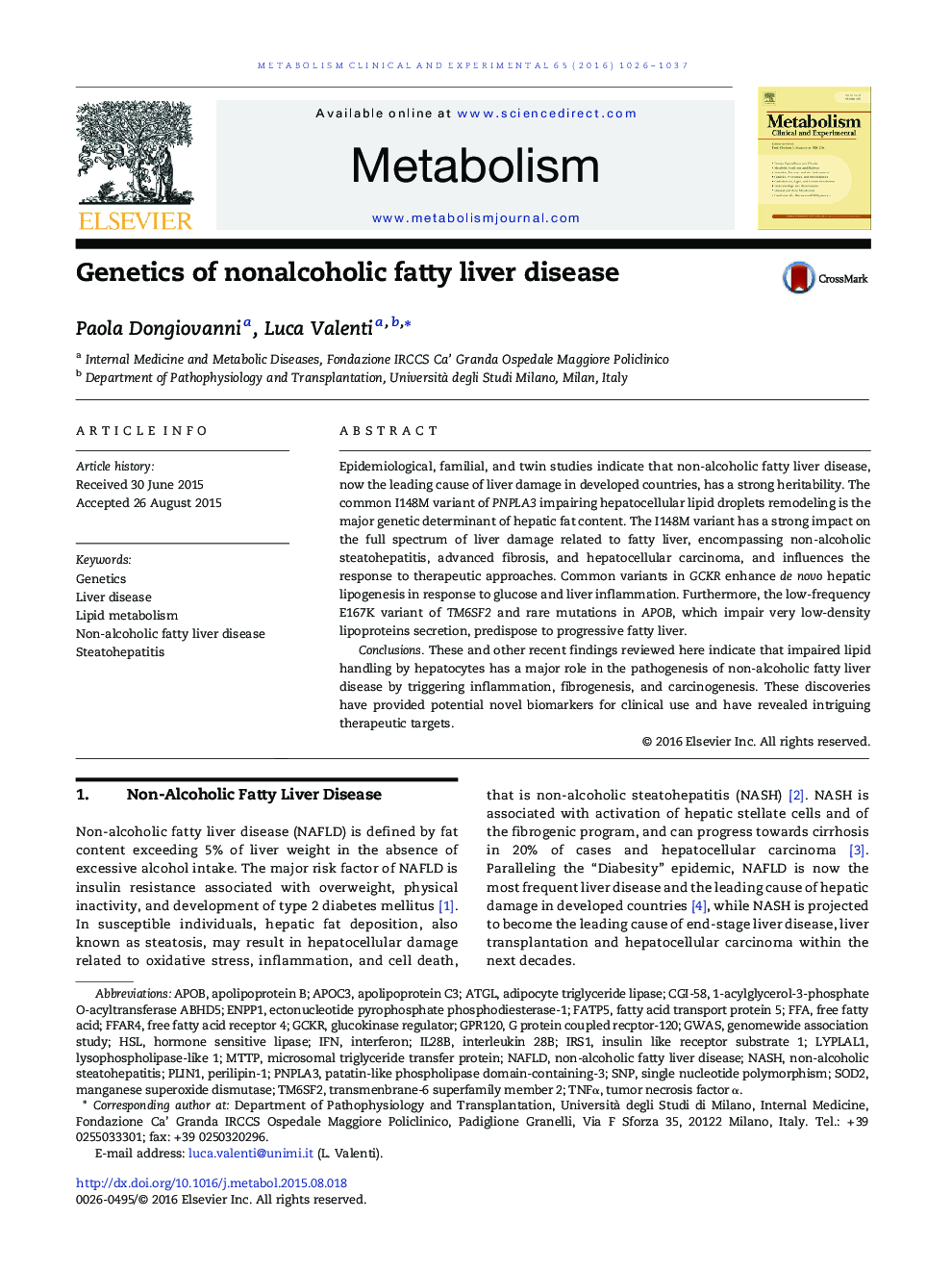| کد مقاله | کد نشریه | سال انتشار | مقاله انگلیسی | نسخه تمام متن |
|---|---|---|---|---|
| 5902981 | 1157043 | 2016 | 12 صفحه PDF | دانلود رایگان |
Epidemiological, familial, and twin studies indicate that non-alcoholic fatty liver disease, now the leading cause of liver damage in developed countries, has a strong heritability. The common I148M variant of PNPLA3 impairing hepatocellular lipid droplets remodeling is the major genetic determinant of hepatic fat content. The I148M variant has a strong impact on the full spectrum of liver damage related to fatty liver, encompassing non-alcoholic steatohepatitis, advanced fibrosis, and hepatocellular carcinoma, and influences the response to therapeutic approaches. Common variants in GCKR enhance de novo hepatic lipogenesis in response to glucose and liver inflammation. Furthermore, the low-frequency E167K variant of TM6SF2 and rare mutations in APOB, which impair very low-density lipoproteins secretion, predispose to progressive fatty liver.ConclusionsThese and other recent findings reviewed here indicate that impaired lipid handling by hepatocytes has a major role in the pathogenesis of non-alcoholic fatty liver disease by triggering inflammation, fibrogenesis, and carcinogenesis. These discoveries have provided potential novel biomarkers for clinical use and have revealed intriguing therapeutic targets.
Journal: Metabolism - Volume 65, Issue 8, August 2016, Pages 1026-1037
